Top speed 346 km/h Wingspan 43 m | Range 6,832 km Length 29 m First flight July 9, 1942 | |
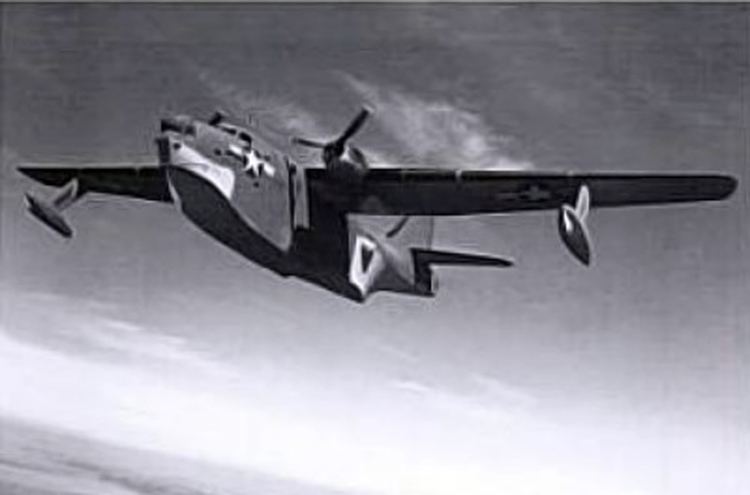 | ||
Engine type Wright R-3350 Duplex-Cyclone | ||
Boeing xpbb sea ranger test flight 1942
The Boeing XPBB-1 Sea Ranger (Boeing 344) was a prototype twin-engined flying boat Patrol Bomber built for the United States Navy. The order for this aircraft was cancelled to free production capacity to build the Boeing B-29, and only a single prototype was completed.
Contents
- Boeing xpbb sea ranger test flight 1942
- Boeing xpbb sea ranger
- Development
- Specifications XPBB 1 Sea Ranger
- References
Boeing xpbb sea ranger
Development

Well before the United States entered World War II, the Navy started a program to develop a long-range flying boat, able to cover the vast expanse of the Pacific Ocean. The Model 344 design offered by Boeing was chosen, and a contract for 57 aircraft was awarded on 29 June 1940. The designation given to the type was PBB for Patrol Bomber, Boeing, the first aircraft of the PB category built by Boeing for the Navy. Nevertheless, Boeing did have important experience in the construction of large flying boats, having produced the successful Boeing 314 airliner. To build the large PBB, Boeing started construction of a new lakeside factory in Renton, Washington, that was owned by the US Navy. However, the prototype was constructed mostly in Seattle, and was moved to Renton only to be completed.
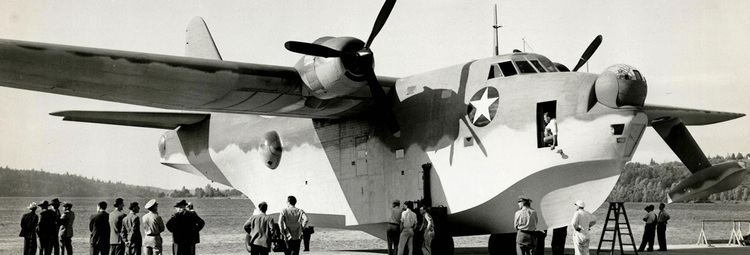
To achieve the desired long range, the PBB became a quite large aircraft, with a wing span of 139 feet 8½ inches (42.59 m) and a crew of 10. Despite this size, it was powered by just two Wright R-3350 Duplex Cyclone radial engines, driving three-bladed Curtiss Electric propellers. It was the largest twin-engined flying boat flown during World War II. For a flying boat, the PBB was aerodynamically clean, with a cantilever wing set high on the fuselage. The planing bottom had a single step, and the non-retractable outrigger floats were attached to streamlined, cantilever struts. The lower hull was divided in seven watertight compartments, and a short upper deck provided seating for the cockpit crew. The wing of the PBB was constructed in a centre section and two outer panels. The centre section carried the engine nacelles and contained the internal bomb bays, as well as fuel and oil tanks. The outer wing panels contained main and auxiliary, integral fuel tanks.

The defensive armament of the PBB consisted of five powered turrets equipped with Browning .50 M2 machine guns. They were installed in the nose, in the tail, on the upper fuselage just aft of the trailing edge of the wing, and in two waist positions on the rear fuselage. Except for the waist guns, the turrets had two guns each. Offensive armament could consist of up to 20,000 lb of bombs in internal bomb bays in the wing center section (five bays on each side) or of two Mk.13 or Mk.15 torpedoes slung under the wing centre section.
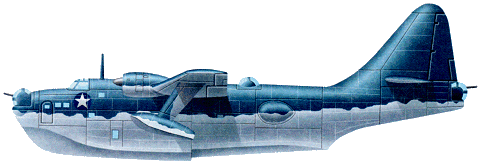
The 1710 US gallon auxiliary outer and 1565 US gallon inner fuel tanks were intended to be used only in an overload condition, in which the PBB would use catapult-assisted take off to achieve a theoretical range of 11000 miles (17700 km). Normal range using the main fuel tanks was 4245 miles (6830 km). In March 1941 the Navy's Bureau of Aeronautics asked the Naval Aircraft Factory for a catapult able to launch a PBB-1. The NAF duly prepared a design for a Mark VII catapult that would be able to launch a fifty-ton PBB-1 at a speed of 130 miles per hour. The catapult would be installed on a lighter, so that the flying boat could be lifted onto it with a large crane or hydraulic jacks. However, in the summer of 1942, while development of the Mk.VII catapult was still ongoing, the Navy cancelled the project because it considered JATO assistance at take-off more practical.
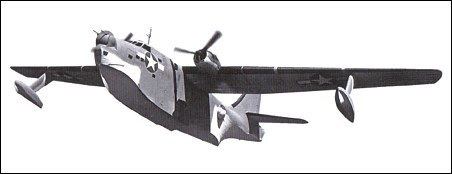
The prototype, designated XPBB-1, made its first flight on 9 July 1942 from Lake Washington. The aircraft handled very well and was considered technically successful. However, already in 1942 the PBB programme had been cancelled: The need for a long-range flying boat had been reduced by the ability of land planes such as the Consolidated PB4Y to fly long-range missions over the ocean, and construction of a small number of PBB-1s would have a negative impact on the production rate of the B-29. The Navy allowed the Army to use the Renton factory for the production of B-29 bombers, in return for the use of another factory in Kansas.
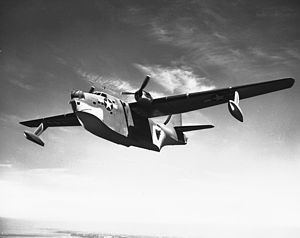
The single XPBB-1 was handed over to US Navy, and was used in trials programmes until 1947, when it was finally retired. Despite suggestions that more aircraft might be built, perhaps by another factory, it remained the single example of the type, and was accordingly nicknamed "Lone Ranger".
Specifications (XPBB-1 Sea Ranger)
Data from War Planes of the Second World War: Volume Six
General characteristics
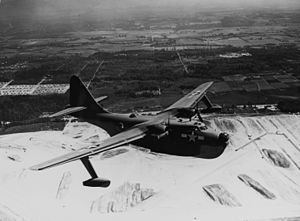
Performance
Armament
